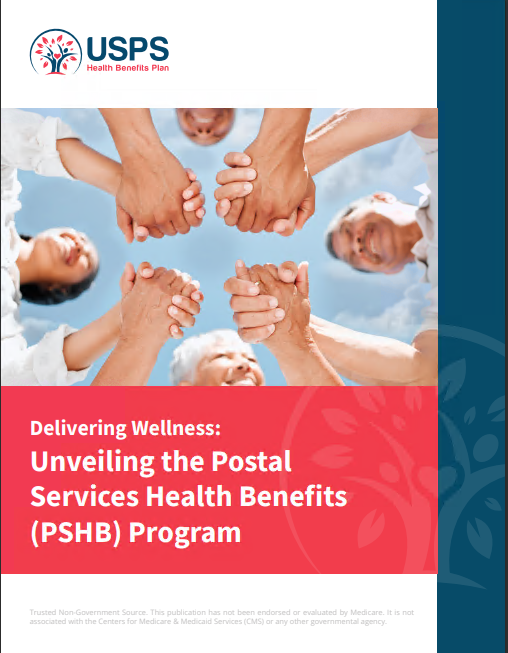Key Takeaways:
-
Your deductible is a critical factor in choosing the right Postal Service Health Benefits (PSHB) plan. Understanding how it impacts your overall healthcare costs can save you money and frustration.
-
Striking the right balance between deductible amounts and monthly premiums ensures you avoid overpaying while still getting the coverage you need.
Why Your Deductible Plays a Big Role
When selecting your Postal Service Health Benefits (PSHB) plan, the deductible is more than just a number on a brochure. It’s the amount you pay out of pocket before your plan starts covering most services. But it’s not just about what comes out of your wallet first; your deductible affects your premiums, copayments, and overall health costs. Getting it right can mean the difference between financial security and unnecessary expenses.
The key to making an informed choice is understanding how deductibles work in relation to other cost factors—and ensuring the plan you pick fits your health needs and budget.
What is a Deductible, Really?
A deductible is the amount you must pay for covered healthcare services before your PSHB plan begins to pay. Once you’ve met your deductible, your insurance starts sharing the costs through coinsurance or flat copayments. Let’s break down the terms so you’re on the same page:
-
Deductible: The upfront cost you pay before your plan kicks in fully.
-
Coinsurance: The percentage of costs you share with the plan after meeting your deductible.
-
Copayment: A flat fee you pay for specific services, like a doctor’s visit.
These components work together to determine how much you pay annually for your healthcare needs. PSHB plans often have different deductibles for in-network and out-of-network services, so paying attention to the plan’s details is crucial.
High vs. Low Deductibles: Which Side Are You On?
Choosing between a high-deductible or low-deductible plan isn’t just about preference—it’s about understanding your healthcare habits and financial priorities. Here’s how the two compare:
High-Deductible Plans:
-
Lower Premiums: These plans generally have lower monthly costs, making them ideal if you don’t expect to use healthcare services frequently.
-
Out-of-Pocket Risk: You’ll pay more upfront before your insurance starts sharing costs, which might be challenging if unexpected health issues arise.
-
Good for Healthy Individuals: If you rarely visit the doctor or use minimal healthcare services, this option might suit you best.
Low-Deductible Plans:
-
Higher Premiums: You’ll pay more each month but benefit from lower out-of-pocket costs when accessing care.
-
Predictable Costs: These plans are better for individuals or families who anticipate regular doctor visits, treatments, or prescriptions.
-
Good for Chronic Conditions: If you have ongoing medical needs, the lower upfront costs might balance out the higher premiums.
How Deductibles Fit Into Your Total Costs
Your deductible isn’t the only factor that impacts your healthcare spending. To choose the right plan, you’ll need to evaluate other costs as well. These include:
1. Premiums:
This is the amount you pay every month to maintain your coverage. Plans with lower deductibles often come with higher premiums, and vice versa. It’s essential to consider how much you can afford monthly versus how much you’re willing to pay when you actually need care.
2. Out-of-Pocket Maximum:
This is the most you’ll spend on covered healthcare services in a year. Once you hit this cap, your plan pays 100% of covered costs. If you’re worried about high medical expenses, choosing a plan with a reasonable out-of-pocket maximum can provide peace of mind.
3. Cost-Sharing:
Deductibles, coinsurance, and copayments make up your cost-sharing responsibilities. Knowing how each works can help you estimate your yearly expenses.
4. Prescription Drug Costs:
Many PSHB plans integrate prescription coverage differently. Some plans apply prescription costs to your deductible, while others don’t. Make sure you’re clear on how your medications factor into the equation.
Who Should Consider a Higher Deductible?
High-deductible plans work best for people who:
-
Are generally healthy and visit the doctor infrequently.
-
Don’t anticipate large medical expenses in the coming year.
-
Want lower monthly premiums to allocate more of their budget elsewhere.
If this sounds like you, make sure the plan includes preventive care at no extra cost. PSHB plans often cover essential services like annual checkups, even if you haven’t met your deductible yet.
Who Should Go for a Lower Deductible?
Low-deductible plans are better suited for individuals who:
-
Have chronic conditions requiring regular treatments or prescriptions.
-
Need frequent access to specialists or urgent care.
-
Are planning major medical procedures or hospital stays in the near future.
With a lower deductible, you’ll reach your cost threshold faster, allowing your plan to cover more of your expenses sooner.
Additional Considerations When Choosing Your PSHB Plan
To make the best decision, consider these other factors:
1. Network Coverage:
In-network providers usually cost less than out-of-network ones. If your preferred doctors or hospitals aren’t in the plan’s network, you could end up paying significantly more.
2. Family vs. Individual Coverage:
If you’re covering more than just yourself, remember that family plans often come with separate deductibles for each individual and the family as a whole. Review these numbers carefully to avoid surprises.
3. Preventive Services:
Many PSHB plans cover preventive services like screenings, vaccines, and wellness visits at no additional cost. These benefits can offset the impact of a higher deductible.
4. Annual Health Needs Assessment:
Take a moment to reflect on what health services you might need in the upcoming year. If you’re expecting significant medical costs, opting for a lower deductible plan could save you more in the long run.
Timing Is Everything: Open Season and Beyond
The PSHB Open Season runs annually from mid-November to mid-December. This is your window to choose a new plan or make changes to your current coverage. Outside of this period, adjustments can only be made during a Qualifying Life Event (QLE), such as marriage, the birth of a child, or losing other health coverage.
Make sure to review your Annual Notice of Change (ANOC) letter to stay updated on premium changes, deductible amounts, and any new plan benefits.
Maximize Your PSHB Benefits with Smart Planning
Once you’ve chosen a plan, there are ways to make the most of it while keeping costs under control:
-
Use In-Network Providers: Sticking to in-network doctors and facilities ensures you get the lowest rates available under your plan.
-
Take Advantage of Preventive Care: Schedule routine checkups and screenings that your plan covers at no extra cost. These visits help catch potential health issues early, saving you money in the long term.
-
Track Your Spending: Keep an eye on how close you are to meeting your deductible and out-of-pocket maximum. This knowledge can help you plan procedures or treatments strategically.
-
Explore Additional Benefits: Some PSHB plans offer extras like telehealth services, fitness programs, or discounts on vision and dental care. Make sure to utilize these perks to their fullest.
Avoid Overpaying Without Sacrificing Coverage
Choosing the right deductible can feel like walking a tightrope—you want affordable premiums without risking high out-of-pocket costs. By understanding your healthcare needs and reviewing all aspects of your PSHB plan, you can strike the perfect balance. Remember, it’s not just about choosing the cheapest or most expensive option; it’s about finding the plan that gives you peace of mind while keeping your costs manageable.
Make a Confident Choice This Year
This year’s Open Season is your opportunity to take control of your healthcare costs. Start by evaluating your health needs and considering how much risk you’re willing to take on with your deductible. Pair this analysis with a thorough review of each plan’s network, premiums, and benefits to ensure you’re making the best choice for yourself and your family. With careful planning, you can find the perfect PSHB plan without overpaying.











